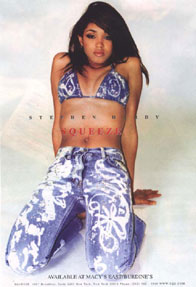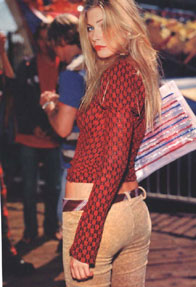The Objectification of Women
Below are images of body parts used to sell
products.
Questions
-
Look at the Bacardi ad.
-
What feelings are the advertisers trying to
create with this ad? Were they effective?
-
Why do you think the advertisers chose to
focus only on this woman’s stomach?
-
What is this ad saying, implying or promising?
-
Look at the Aubade ad.
-
What feelings are the advertisers trying to
create with this ad? Were they effective?
-
Why do you think the advertisers choose to
focus only on this woman’s breasts?
-
What is this ad saying, implying or promising?
-
Why do you think advertisers might choose
to focus on only one body part?
-
What is your reaction to advertisers using
dismemberment as an advertising technique?
-
What are some consequences of this technique?
On our perceptions? Our attitudes?
Currently, legs seem to be a particularly
popular body part on which to focus.
Questions
-
Why do you think advertisers might choose
to draw attention to legs?
-
When advertisers choose to focus explicitly
on legs, do they present a diversity of body types? Why do you think they
portray legs the way they do?
-
What are some possible effects on young girls
and women of constantly seeing images like these? What about effects on
young boys and men?
-
In an analysis of the portrayal of women in
rock videos a photographer states that they are often "merely outlines.
Just shapes. Nothing inside matters. . . . They are just legs in high heels."
What do you think he means when he says this? How does this connect with
the constant focus on ‘legs in high heels’ in advertising?
-
Other body parts
in ads here
Women’s voices
There are many images in advertising that
silence women – images that show women with their hands over their mouths
and other visuals, as well as copy, that strip women of their voices.
The body language of young women and girls
in advertising is usually passive and vulnerable. Conversely, the body
language of men and boys is usually powerful, active and aggressive.
Questions
-
Battering is the single greatest cause of
injury to women in America. One third of women who are murdered in our
country are killed by their husbands or partners. 1 in 4 women will be
raped in her lifetime. When you look at the images above within the context
of this rate of men’s violence against women in our culture, how do you
respond to those images? Do you think that advertisers have a responsibility
to the society to consider the attitudes that their images support?
-
Why do you feel advertisers would use such
images in the first place?
-
Regardless of why they use them, what overall
effect might such images have?
-
Other images of bondage
and silence
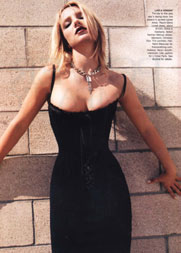 The selling
of kids and sex
The selling
of kids and sex
In recent years, mainstream media have increasingly
traded in the sexualization of young girls and teenagers. More and more,
we see teen models and icons captured in seductive poses that draw attention
to their bodies. When teenagers emulate the celebrities and models they
see repeatedly in media – whether in dress, style, attitude or behavior
– they are in effect emulating a carefully crafted fiction that is expressly
designed by marketers to be consumed as an object.
Below are three advertisements that ran
in the September 2001 issue of Seventeen Magazine.
Questions:
-
Who is each ad trying to target?
-
What is each ad trying to sell?
-
What feeling is each ad trying to create?
Do you feel it works?
-
What is each ad saying, implying or promising?
-
How old do you think the model in each advertisement
is?
-
View a page with
a few more examples here
-
What message(s) do images like these send
to young girls about sex?
-
What message(s) do images like these send
to young boys about sex?
-
Images like these, with models of close to
the same age, also appear in popular men’s magazines. The audience of these
magazines ranges from age 14-40+. What do images like these suggest to
older men about teenage girls? In what ways do you feel this might be dangerous?
-
How might it be dangerous for young girls
to dress and act like the models and celebrities in magazines?
-
If men have seen sexualized images of teenagers,
and they then look at teenagers in real life in a sexual way, are they
responsible? Why? Why not?
-
What connections, if any, do you see between
how young models are portrayed in fashion magazines and child pornography?
Exercises
back to the media
homepage...

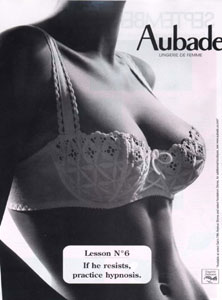


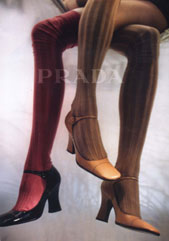

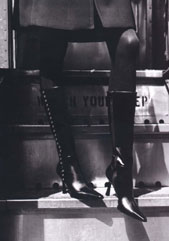

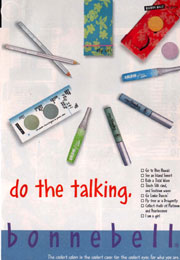

 The selling
of kids and sex
The selling
of kids and sex